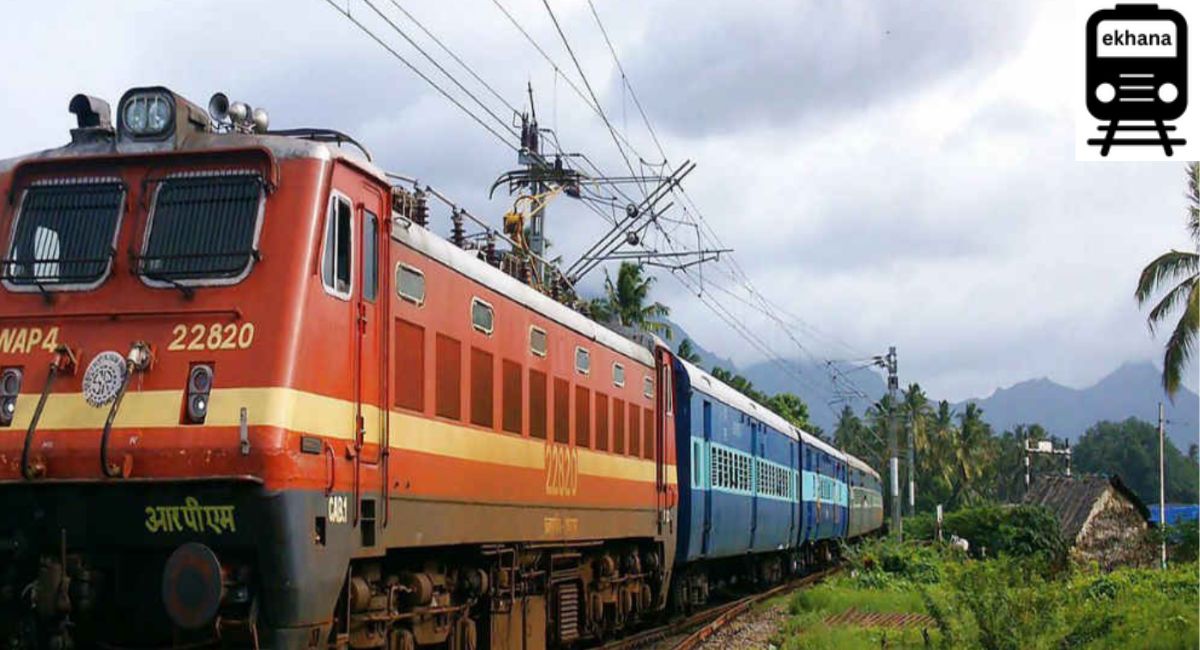The Need to Check NR Status
Do you want to know how to check the status of the PNR online? The PNR number is an important concept in Indian Railways and is used for various purposes. Once a user makes a reservation, the PNR number is generated randomly and is constantly required by the traveler. from traveling to ordering catering services online on the train, etc. First, let’s understand what the term PNR means and why it is important to check the status of the PNR.
PNR – Passenger Name Record is a unique ten-digit number that is generated at the time a user books, regardless of status. This unique 10-digit number is visible at the top right of the train ticket and is even stored in the train’s computer database reservation system. The whole concept of PNR number generation was introduced after being successfully implemented in airlines to make the whole process more seamless, accessible and efficient for both the department and the travelers. The PNR is the best way to securely store all passenger data, including personal and travel information. It stores basic traveler data such as age, date of birth, gender, email id, phone number, travel information such as travel date, ticket number, bus number, seat number, station of origin, and destination, preferred berth, class of travel, method of payment and the like.
This unique ten-digit number consists of a combination of three and seven digits and is used to check the PNR status and find out the exact status of the train ticket. There are different ways to check the status of the PNR and if you want to know more about them, keep reading. In the case of a confirmed reservation, there is absolutely no need to check the PNR status. If it is a waitlist status, it is imperative to review it and find out what status you have at that time. The entire PNR status verification process only takes a few minutes. To check the PNR status, users can do the same through SMS, online websites, downloading the mobile app, visiting the station and checking the map provided by the train before the train departs. To know it in detail, go through the following notes.
Via SMS: without a doubt, this is the easiest way to check the status of the PNR. Just take out your phone, enter your PNR number in PNR format and send the text to 139. Within a minute people will receive a text to the same number with the details and status of the PNR at that time. For information, 139 is not a free number and Rs 3 will be deducted for each SMS.
Through online websites – This is another quick and common way that people prefer to check PNR status. To use this approach, users must have a laptop or computer system and an active Internet connection. Login to the IRCTC website with genuine credentials, go to PNR tracking, enter the 10-digit PNR number and click the status button. That is! A page will immediately open with the status of your PNR number and related information. Besides the IRCTC platform, there are also many other portals like NTES or Travel Khana that could be used to check PNR status. The process is the same for everyone and all you need to do is enter your PNR number.
Mobile App – People can also download the app from IRCTC or otherwise and once done, access the PNR tracker and find out the exact status.
Final map at the station: The railway authorities draw up the final map approximately 4 hours before the departure of the train. Get off at the station on time, ask the counter staff about the PNR status of your ticket by giving them your PNR number.
I hope the approaches are now clear and informative on how to check PNR status and why it is important to do the same. Other than that, when you travel by train, carry an ID with you for verification purposes. Travel Khana is a leading provider of online catering services serving the dietary needs of travelers on a large scale on a daily basis. The platform can be accessed to check train updates, check PNR status, online schedules, seat availability, real-time train status and much more. Find out well in advance about the status of the PNR and make the most of technology and these websites to get the most out of your train trip. When ordering catering services online on the train, be sure to provide them with the PNR number, as it is required to order food during travel.
What is the PNR?
The ticket booked on an Indian Railway includes a 10-digit number called PNR, which stands for Passenger Name Record. It is always generated, regardless of your status, when you book a train ticket through the station platform ticket office or through IRCTC, Indian Railway Catering and Tourism Corporation, the official website of Indian Railway. As soon as you have reserved a ticket, the CRIS – Center for Railway Information Systems saves it for about 9 months and then deletes it from the database. To find out more about the details of the train trip, you must first check the status of the PNR.
What does a PNR number store?
A PNR number, the 10-digit number stored in the Indian Railways database, consists of the following details, including passenger details like name, gender, age, etc. Train and journey details are also stored here, including train number, seat number, carriage number, departure station, travel class, etc. There are also details of the train ticket, including the payment method, fare, and transaction ID.
Is the PNR number enough to travel on the train?
Well yes it is. If you are wondering whether the PNR number is enough to travel on the train or not, then it is enough to register. If your ticket status is confirmed and you know your PNR number and seat number, you can even travel on the train without a ticket. In this case, simply contact TC and show them your valid identity document, so that there is not a single fact left to verify.
How is a PNR number issued for a train?
The PNR number is a 10-digit number consisting of 10 digits, where the first 3 digits represent the PRS – Passenger Reservation System from which the ticket is booked. The first digit of the 10 digits highlights the area of the train, which is the starting point or node of the train. The number 1 corresponds to the SCR zone, 2 and 3 to the New Delhi PRS zone, 4 and 5 to the Chennai PRS zone, 6 and 7 to the Kolkata PRS zone and 8 and 9 to the Mumbai PRS. The last 7 digits are basically randomly generated numbers and are only used to make the PNR number unique.
How to find the PNR number on a train ticket?
Are you traveling by train for the first time and don’t know where to find the PNR number on a train ticket? Normally, the 10-digit PNR number is printed and can be seen in the upper left corner of the ticket, which can be purchased at the railway crossing reservation window. If you booked the e-ticket, the PNR number, ie. H the 10-digit number mentioned above in a single cell. Now, do you have any idea how to check this? I hope that clears up now.

What type of PNR Status signifies?
PNR (Passenger Name Record) status refers to the booking status of a train ticket. It can have several different statuses, including:
- “Confirmed” – this means that the ticket has been confirmed and the passenger is guaranteed a seat on the train.
- “Waitlisted” – this means that the ticket has not been confirmed yet and the passenger is on a waitlist for a seat. If a seat becomes available, the ticket will be confirmed.
- “RAC” (Reservation Against Cancellation) – this means that the passenger has been given a “Reservation Against Cancellation” status, which means that the passenger will be given a seat if one becomes available due to a cancellation.
- ” Cancelled “ – this means that the ticket has been cancelled and the passenger will not be able to board the train.
It’s worth noting that different countries and train systems may use slightly different terms or have slightly different rules for PNR status.
Know about PNR status CNF and RAC
PNR status “CNF” stands for “Confirmed” and means that the train ticket has been confirmed and the passenger is guaranteed a seat on the train. This means that the passenger can board the train with the confirmed ticket and seat assigned.
PNR status “RAC” stands for “Reservation Against Cancellation” and means that the passenger has been given a reservation, but not a confirmed seat. This means that if another passenger with a confirmed seat cancels their reservation, the RAC passenger will be allotted a seat.
Passengers holding RAC tickets are allowed to travel in the train and are allotted a seat to sit, but they do not get separate berths to sleep. These passengers are given shared accommodation (either a lower or middle berth) with another passenger who has a RAC ticket, but both of them will be given separate seats to sit during the journey.
It’s worth noting that different countries and train systems may use slightly different terms or have slightly different rules for PNR status.
Know about PNR status PQWL and RLWL
PNR status “PQWL” stands for “Pooled Quota Waitlist” and “RLWL” stands for “Remote Location Waitlist.” These are types of waitlist status for train tickets in India.
When a passenger books a train ticket and the train is fully booked, the passenger can choose to be put on a waitlist. If a seat becomes available due to a cancellation, the passenger on the waitlist will be given the option to confirm the seat.
PQWL means that the passenger is on a waitlist for a specific quota of seats that are set aside for passengers traveling between certain stations. RLWL means that the passenger is on a waitlist for a specific station that is considered a remote location and has a separate quota of seats set aside for it.
Passengers with PQWL or RLWL status will be confirmed only if there is a vacancy created due to cancellation or from the quota. The chances of confirmation of PQWL is more as compared to RLWL. It’s worth noting that different countries and train systems may use slightly different terms or have slightly different rules for PNR status.
Know about PNR status CKWL and GNWL
PNR status “CKWL” stands for “Tatkal Waiting List” and “GNWL” stands for “General Waiting List”. These are types of waitlist status for train tickets in India.
When a passenger books a train ticket and the train is fully booked, the passenger can choose to be put on a waitlist. If a seat becomes available due to a cancellation, the passenger on the waitlist will be given the option to confirm the seat.
CKWL is a waiting list for the Tatkal Quota, which is a special quota of seats set aside for passengers booking tickets at the last minute. Passengers on the CKWL are more likely to get a confirmed seat than those on the GNWL.
GNWL is a waiting list for the General Quota, which is a quota of seats set aside for passengers booking tickets in advance. Passengers on the GNWL are less likely to get a confirmed seat than those on the CKWL, but more likely than those on PQWL or RLWL.
It’s worth noting that different countries and train systems may use slightly different terms or have slightly different rules for PNR status.
Know about PNR status RLGN
PNR status “RLGN” stands for “Remote Location General Waiting List”. This is a type of waitlist status for train tickets in India.
When a passenger books a train ticket and the train is fully booked, the passenger can choose to be put on a waitlist. If a seat becomes available due to a cancellation, the passenger on the waitlist will be given the option to confirm the seat.
RLGN is a waiting list for the Remote Location General Quota, which is a quota of seats set aside for passengers booking tickets in advance for remote stations. Passengers on the RLGN are less likely to get a confirmed seat than those on the CKWL or GNWL.
It’s worth noting that different countries and train systems may use slightly different terms or have slightly different rules for PNR status.
Know about CAN and MOD
PNR status “CAN” stands for “Canceled” and “MOD” stands for “Modified”.
“CAN” status signifies that the train ticket has been canceled , the passenger is not allowed to travel with the same ticket and the fare for the ticket will be refunded.
“MOD” status signifies that the train ticket has been modified. This could mean that the passenger has changed the date of travel, the class of travel, the boarding point, or any other aspect of the ticket.
It’s worth noting that different countries and train systems may use slightly different terms or have slightly different rules for PNR status, and there may be additional fees or restrictions for modifying a ticket.
Know about WL# and RAC
PNR status “WL#” stands for “Waitlist Number” and “RAC” stands for “Reservation Against Cancellation”.
“WL#” is a number assigned to a passenger who is on a waitlist for a train ticket. The number indicates the position of the passenger on the waitlist. For example, “WL5” means the passenger is the 5th person on the waitlist. As and when the seat gets confirmed, the passenger will be allotted the seat and the WL status will change to CNF(Confirmed).
“RAC” status means that the passenger has been given a reservation, but not a confirmed seat. This means that if another passenger with a confirmed seat cancels their reservation, the RAC passenger will be allotted a seat. Passengers holding RAC tickets are allowed to travel in the train and are allotted a seat to sit, but they do not get separate berths to sleep. These passengers are given shared accommodation (either a lower or middle berth) with another passenger who has a RAC ticket, but both of them will be given separate seats to sit during the journey.
It’s worth noting that different countries and train systems may use slightly different terms or have slightly different rules for PNR status.
Know about REGRET/WL
PNR status “REGRET/WL” stands for “Regret Waiting List”. This is a type of waitlist status for train tickets in India.
When a passenger books a train ticket and the train is fully booked and all the waitlist and RAC quotas are also full, the passenger can choose to be put on a REGRET/WL list. This list is for passengers whose tickets will not be confirmed even if all the waitlisted and RAC tickets get confirmed. This status is given when the railway has no more accommodation to offer and the chances of confirmation are very low.
It’s worth noting that different countries and train systems may use slightly different terms or have slightly different rules for PNR status.
Know about released
PNR status “released” refers to a train ticket that has been cancelled and the reserved accommodation has been made available for other passengers to book. When a passenger cancels a confirmed train ticket, the seat becomes available and can be booked by another passenger. The PNR status of the cancelled ticket will change to “released” to indicate that the seat is no longer reserved and is available for other passengers to book.
It’s worth noting that different countries and train systems may use slightly different terms or have slightly different rules for PNR status and for cancelling train tickets. Some systems may have specific rules for refunds, fees, or restrictions for cancelling tickets, so it’s important to check the specific rules of the train system you’re using.
How is a PNR number generated for a train in the Indian railway?
In the Indian railway system, a PNR (Passenger Name Record) number is generated when a passenger books a train ticket. The PNR number is a unique 10-digit number that is assigned to the passenger’s booking and contains all the details of the passenger’s journey, including the passenger’s name, contact information, and travel itinerary.
When a passenger books a train ticket, the information is entered into the railway’s computer system, which generates a PNR number. The PNR number is then printed on the ticket and can also be found on the passenger’s itinerary, which can be accessed online or through the railway’s mobile app.
It’s worth noting that in the Indian railway system, PNR number is generated for a specific train journey, so it’s unique for each journey. Also, Indian railway system uses a centralized reservation system, which means that PNR numbers can be generated and checked through the Indian railway website, the IRCTC website, or by visiting a railway reservation office.


















+ There are no comments
Add yours